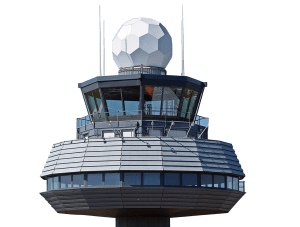Instrument Pilot Rating
Instrument Flight Rules (IFR)
Included in Bachelor of Science in Aeronautics and Associate of Science in Aviation Studies programs. Training in California affords beautiful weather, however CAU utilizes IFR to the maximum extent during flight training.
The addition of the Instrument Pilot Rating to an existing private pilot certificate requires additional certified pilot training and competency in the areas of: flight operations in weather conditions, maintaining holding patterns, precision and non-precision instrument approaches and the use of cockpit automation. These ratings and certificates are earned through either the Bachelor's or Associate's program.
Instrument Pilot Rating Highlights
Ground + Flight Training
In a combination of classroom and flight instruction, students are prepared for the successful completion of the Instrument Pilot Rating.
Proficiency of Instrument Flying
Students master the sensory perceptions relevant to instrument flying, including the fundamental elements of Instrument Flight Rules (IFR).

The instrument pilot rating also requires instruction in Air Traffic Control procedures to familiarize students with all classes of airspace and categories of airports. Students must become proficient in all the areas above to successfully acquire the instrument rating in California.
Certificates and Ratings
Instrument Pilot Rating
Additional Highlights
During this course, you will become intimately familiar with the Instrument Flight Rules (IFRs). Employing the principles of Aviation Physiology, you will learn how sensory perception plays a role in successful instrument flying.
You will understand the foundations of the development of aircraft instrumentation, while also gaining knowledge of the use of Navigational Aids (NAVAIDs) during flight. Exposure to Air Traffic Control (ATC) procedures and the system of National Airspace Classification will aid you in your future execution of departure, enroute, and arrivals. Fundamental instrument application to utilize during holding patterns and missed approaches will be emphasized to obtain proficiency. Students will be introduced to the procedures contained within the Air Route Traffic Control Center (ARTCC) and Terminal Radar Service Area (TRSA) guidelines. Successfully completing this course will prepare you to add the Instrument Rating to your existing pilot certificate.
Here, you will accumulate the in-flight hours required for qualification for the Instrument Rating Practical Test. Your hands-on instruction will include all areas that are relevant to the test, as well as covering the Special Emphasis Areas indicated by the Federal Aviation Administration.
You will apply both precision and non-precision instrument techniques, while exercising your flying skills during holding patterns, Distance Measuring Equipment (DME) arcs, and the utilization of automation. You will have the opportunity to practice cross-country flight planning, ATC procedures, and the handling of IFR emergencies, as you gain competency in operating during adverse weather conditions.
Career Outlook
To obtain the Instrument Rating, you must first hold – or be concurrently obtaining – a Private or Commercial Pilot Certificate. The addition of an Instrument Rating to your certifications qualifies you to fly under conditions which require a greater degree of knowledge and skill, including flights in high altitudes and during adverse weather conditions. Those with this certificate can seek employment in multiple fields, including private and commercial industries.
Other employment options for those with this rating added to their certificate include becoming a captain, first officer, line or charter pilot, check airman, or a flight operations director. Industries which hire those with an Instrument Rating include private and commercial airlines, governments, agricultural organizations, tour and charter operations, private companies, cargo carriers, and flight schools.
 PRIVATE PILOT CERTIFICATE
PRIVATE PILOT CERTIFICATE INSTRUMENT PILOT RATING
INSTRUMENT PILOT RATING COMMERCIAL PILOT CERTIFICATE
COMMERCIAL PILOT CERTIFICATE FLIGHT INSTRUCTOR
FLIGHT INSTRUCTOR FLIGHT INSTRUCTOR INSTRUMENT
FLIGHT INSTRUCTOR INSTRUMENT MULTI-ENGINE RATING
MULTI-ENGINE RATING